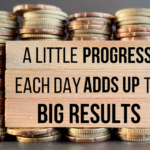In life, unexpected events often surface without warning. Given our vulnerable nature as human beings, projection and prevention is our best approach to confronting these unforeseen circumstances. That’s where disability insurance steps in, a policy often misunderstood, yet vital for financial well-being. This article will unpack the concept of disability insurance, answering questions like ‘Why do you need it?’ and ‘How does it help?’ It is designed to fill the gap in your financial security planning, helping you to make smart decisions about your future.
The Essence of Disability Insurance
In our everyday busy lives, we rarely think about becoming unable to work due to an injury or illness. Yet, the risk of disability is real and can lead to severe financial distress. Disability insurance provides a safety net in these situations.
What is Disability Insurance?
Disability insurance is a type of coverage that replaces a portion of your paycheck, should you be unable to work due to injury or illness. While health insurance covers medical expenses, disability insurance ensures you can meet your ongoing financial obligations, such as rent or mortgage, grocery bills, and more.
Why Do You Need Disability Insurance?
According to the Social Security Administration, one in four 20-year-olds will become disabled before reaching retirement age[^1^]. This statistic underscores the critical nature of disability insurance. While we hate to think of the worst-case scenario, financial preparedness for such a circumstance is crucial.
-
It’s a substantial layer of financial safety, few other policies offer.
-
It’s customizable to meet your unique needs and circumstances.
“It secures your income when you are unable to earn, acting as a financial bridge during challenging times.”
Understanding Disability Insurance Policies
Not all disability insurance policies are created equal. Their intricacies can be confusing. Let’s dive deeper to understand these better.
Short-Term vs. Long-Term Disability Insurance
While both are designed to replace a portion of your income if you can’t work, they differ in terms of duration and cost.
-
Short-term disability insurance replaces a significant percentage of your income for a few months to a year.
-
Long-term disability insurance offers less salary replacement but covers a longer duration, often until retirement or until you are able to return to work.
Key Features of Disability Insurance Policies
When evaluating different disability insurance policies, it’s vital to be well-versed with certain features:
-
Elimination period: It’s a waiting period before the benefits start. Shorter elimination periods equate higher policy premiums.
-
Benefit period: It’s the length of time you will receive benefits. Longer benefit periods equate higher policy premiums.
-
Coverage amount: This is a percentage of your salary that the policy will cover. Typically, disability insurance policies provide 60-80% of your income[^2^].
Navigating the Choice of Disability Insurance
Choosing a disability insurance policy is a paramount decision. Here’s how you can make the right choice.
Factors to Consider
-
Assess your financial needs: Your essential monthly expenses, your savings, and your genre of work influence the type of policy suitable for you.
-
Understand the complexities of policies: Understand terms like total disability, partial disability, own-occupation and any-occupation, as these directly influence your benefits.
-
Compare insurance providers: Look at their claim history, reputation, coverage options, and customer service.
“Understanding your disability insurance policy is just as important as having one. Be sure to delve into the details to make an informed choice.”










